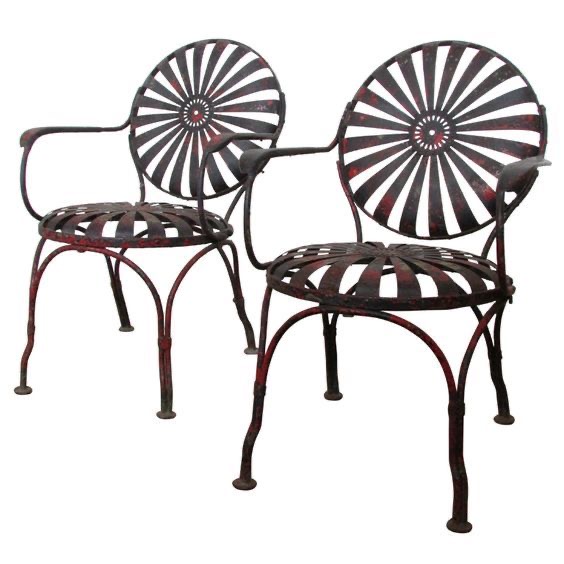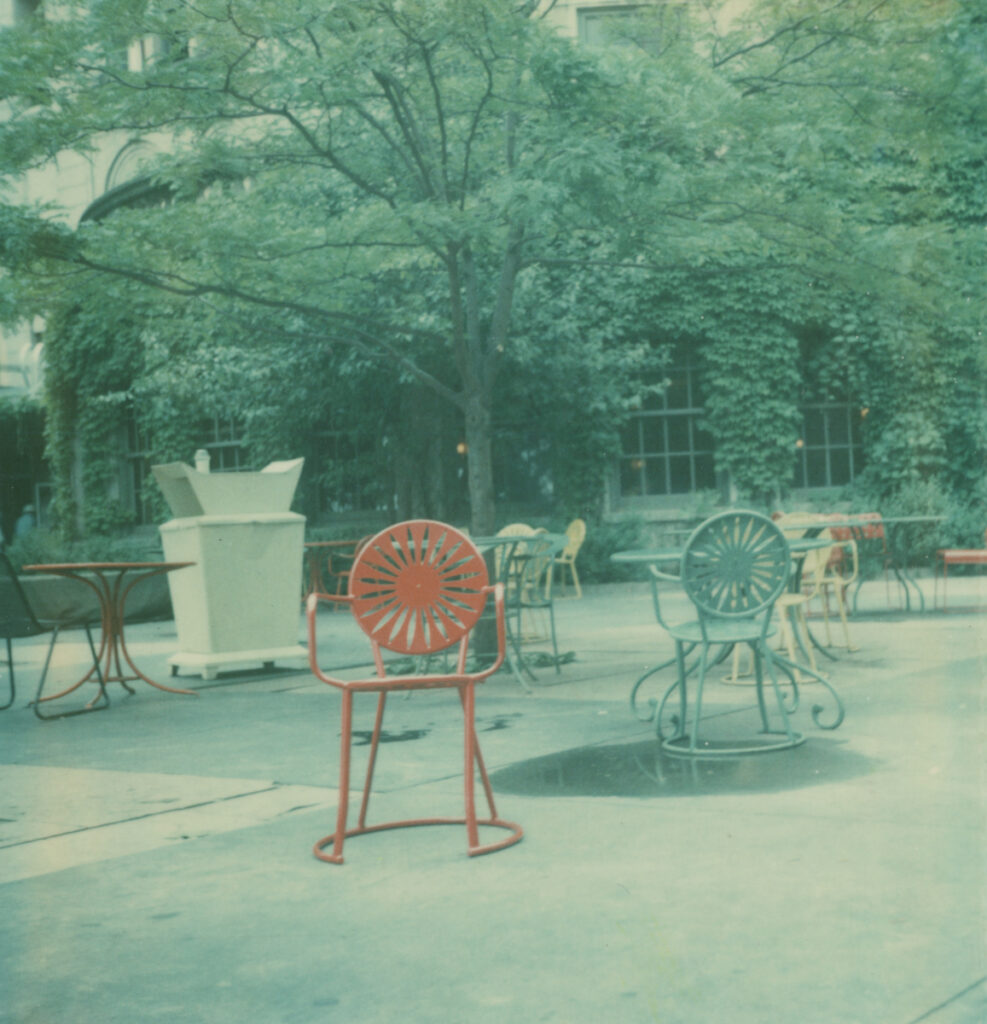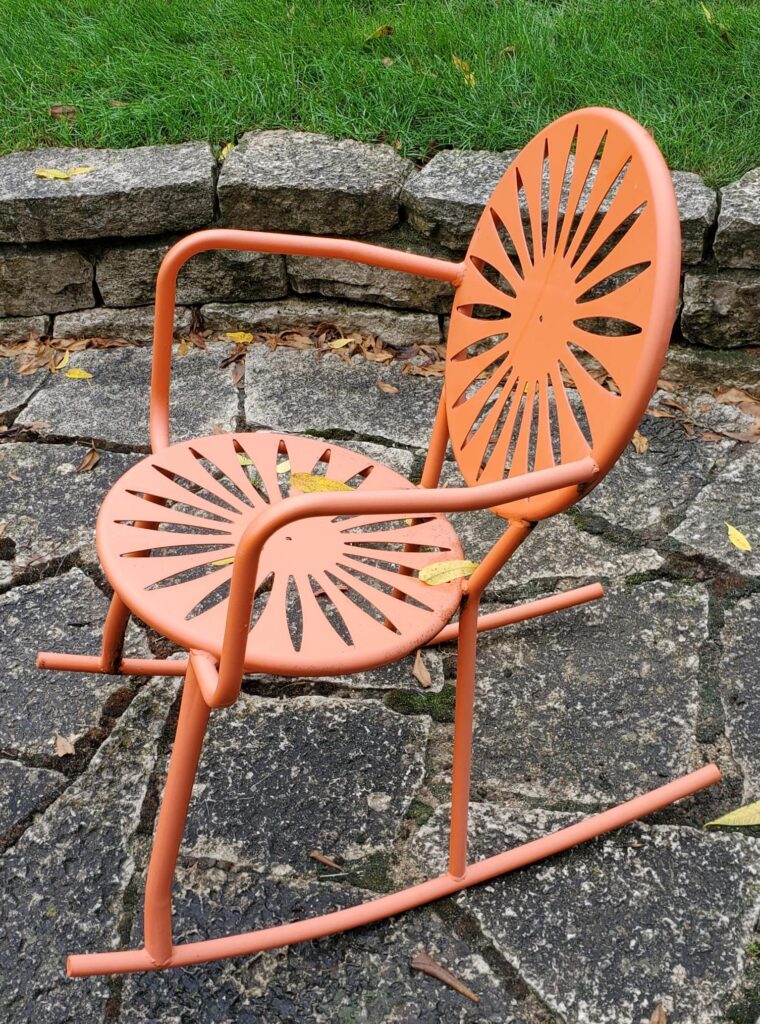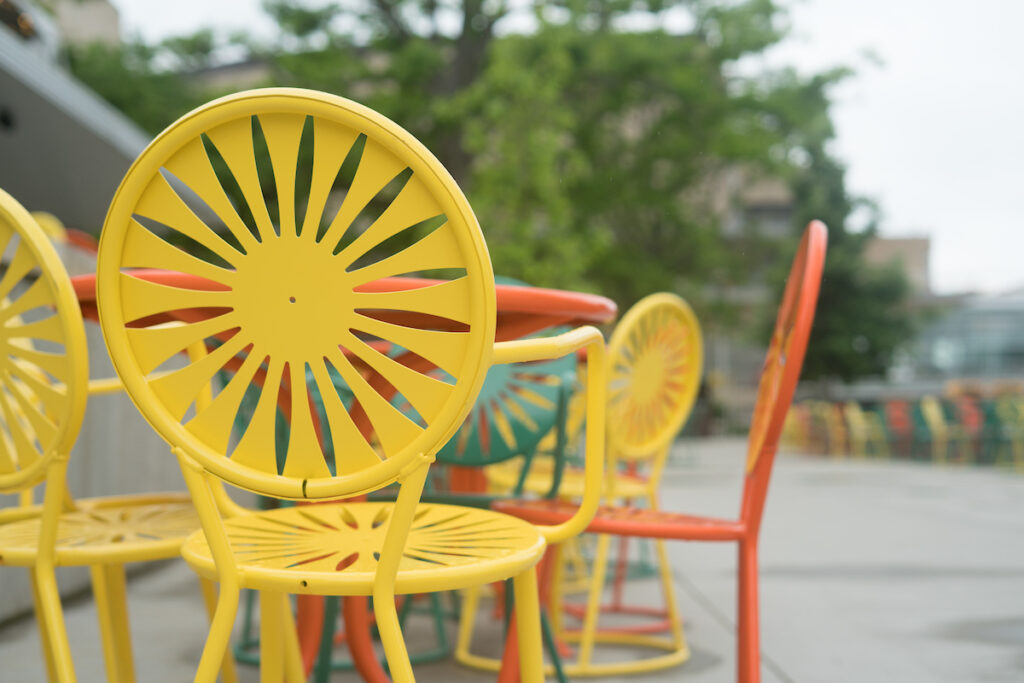Recounting 40 Years of the Chair-ished Partnership Between the Wisconsin Union and Wisco Industries
The Terrace chair is more than just a chair. It’s a statement of resilience. It’s a marker of time and tradition. The Terrace chair is an icon of not only the Wisconsin Union, but also the University of Wisconsin-Madison, and the city of Madison, as a whole. The Terrace chair as we know it today would not be possible without the help of Wisco Industries 40 years ago.
Union team members have been trying to perfect the Terrace chair since 1929, when the first chairs were displayed on the Memorial Union Terrace. The original chairs were made of rustic hickory wood, which did not prove conducive to Madison’s extreme weather patterns. Very quickly, the Union team realized that they had to make a change in materials if they wanted a chair that would withstand the frigid winters.
By 1933, the Union team had made the switch from wooden to metal chairs. Multiple metal chair designs were created during this time and were in use until the 1960s, each of them including a sunburst design that has become symbolic of the Wisconsin Union. I sat down with my grandfather, former Associate Director Tom Smith, to listen to his recollection of the Union’s search for a perfect partner to create the Terrace chairs we were sitting on, as well as some general reflections about his time with the Union. My grandpa began working at the Union in 1965 as a student, became associate director in the mid-1970s and remained in his position until his retirement in 2001. Read our interview with Tom below.
What do you remember about the history of the Terrace chair from your time working at the Union?
I’ll start back in the late 1960s, when we had two types of chairs: the sunburst chairs that we’re sitting on now and some spring back chairs. The Terrace was very small at the time—it was just a flagstone patio, so there weren’t many chairs. In the 1970s, the Terrace went through its first expansion, and we realized we were having trouble finding the chairs. The spring back chair was made of two leaf spring assemblies, one on the back of the chair and one on the seat. These flat pieces of metal would come up and join on a hub in the middle of the seat and back. They were really comfortable, but they were subject to rusting, so the springs would let go and people would catch their clothing on them. All of these things, combined with the fact that we couldn’t get the parts for the spring back chairs anymore, led Union team members to abandon that particular chair design.
The sunburst Terrace chair design didn’t rust like the spring back chair did, but the company that made these chairs went out of business. Marty Verhelst, a former coworker of mine, had served as the Union’s chief financial officer, running the accounting operation here until he got a job at Wisco Industries, a metal fabrications company in Oregon, Wis.
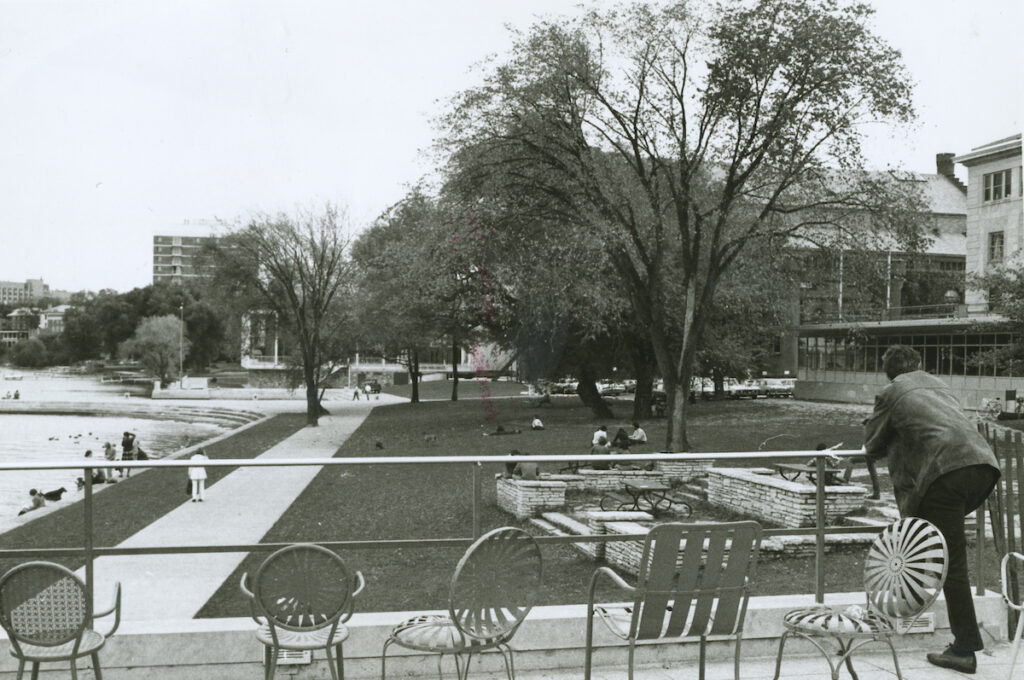
After the chair manufacturer closed, and we no longer had a company to produce our Terrace chairs, I called Marty and I asked, “Since you’re in a company that does metalwork, would you be interested in pitching to your bosses the idea of making these chairs?”
He got back to me saying that the company was swamped and had more business than they could handle, so that became a dead end.
But then, during the recession of the early 1980s, my phone rang—it was Marty.
He said, “We really need some more work here. We’re interested in making that chair.”
We collaborated on it, and there was some expense in producing the chair because the company needed tools and dies. In a process known as tooling, they take a flat piece of metal, put it on a press, center it with the hole that can be seen in the middle of the sunburst design, and the press comes down and cuts out all these little sunburst patterns. Once the chair is assembled and welded together, it gets sent out for painting.
As a staff member of the Union, I went to the Union trustees, which was called the Memorial Union Building Association at the time (now called the Wisconsin Union Association), and asked if they would approve the money from their funds to pay for the tooling. They agreed to fund the tooling, and then Wisco Industries started making the chairs. The chairs have actually become a source of revenue for the trustees, an investment that has now been returned many times. The partnership solved the Union’s problem with the chairs. Since the 1980s, Wisco Industries has produced thousands of these chairs and tables.
What is the significance of the colors of the chairs?
These have always been the colors of the chairs on the Terrace. There’s John Deere green, Allis-Chalmers orange and sunshine yellow, all of which honor the state’s farming traditions. The green, orange and yellow chairs are strictly for Memorial Union and Union South and are not available for purchase. If you buy a chair from the Union, it will either be red or white.
Have the chairs stayed the same since the partnership with Wisco Industries began in 1981?
Design-wise, yes. The only thing that’s changed is that they started making some without arms in the last 15 to 20 years.
A fun fact for our readers is that you are in possession of an Allis-Chalmers orange Terrace rocking chair!
Yes, that was given to me by the Union at my retirement.
How does it feel to have played a role in the history of the Terrace chair? It’s such an iconic part of the Wisconsin Union.
It is, but when you work here for as long as I have, it’s all a blur. I remember this, because it was a significant thing, and Marty, who was a really valuable employee of mine, was instrumental in getting this done. We connected and made it happen.
I was here for many decades, and when you think about that period and put it against the history of the campus and of the United States, a lot of really significant things happened. When I started here as a staff person, we were right in the thick of the Vietnam War, and my office was on the fourth floor in the corner of the building overlooking Library Mall and the former Union parking lot. I remember looking out my window one night and seeing a helicopter with searchlights coming over the fountain in the middle of the Mall, trying to track and move people. Teargas was everywhere and coming through the first floor entrance doors. I remember events like that.
A lot of things happened in the span of time when I was here, and the manufacturing of the Terrace chairs was just one of them—one of the happier ones. It is something that lives on in the story of the Union because it has become the icon.
The chairs are the Terrace.
Yes, and I hope that continues.
Thank you to Tom Smith, Marty Verhelst and the teams at Wisco Industries and the Wisconsin Union for bringing our beloved Terrace chairs to life back in 1981. To learn even more about the history of the Terrace chair, click here.

